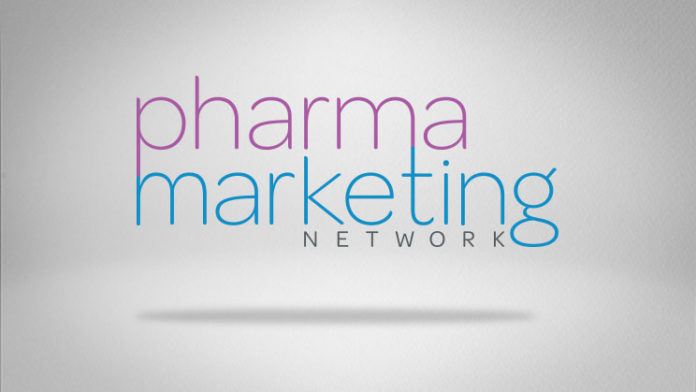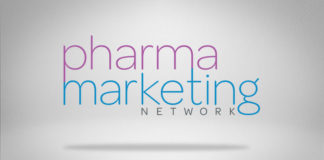A few days ago I posted comments regarding Merck’s hand in the last minute editing of an important Vioxx clinical trail article published in the New England Journal of Medicine (see “Merck’s Hand in the Cookie Jar“). Several members of the PHARMA-MKTING online discussion forum commented on this issue and focused on risk, arguing that there is always some risk associated with Rx medications and the important question is who should determine what level of risk is “acceptable.”
My friend and Pharma Marketing Roundtable member Harry Sweeney started off the conversation:
“Having just returned from the two-day, FDA hearings on risk communications (see “FDA Seeks Input on Communication of Drug Safety Information“), I may be more sensitive than usual to the NEJM revelations. It appears that someone decided to follow the letter of the study protocols in writing or editing the NEJM article but overlooked their spirit, and woefully underestimated how that decision might appear with 20:20 hindsight, particularly in a deteriorating public confidence environment.”
“The news article did provide an interesting couple of numbers that I have been asking about since the story broke some months ago. The seventeen reported deaths were characterized as “four times greater” for Vioxx than for naproxen, and with the three additional deaths as “five times greater” than for naproxen. The article also said that there were “more than 8,000″ cases in the study.”
“Using those numbers, 20/8,000 means that the mortality risk for Vioxx is one-quarter of one percent, or that the odds are 1 in 400. Those numbers also mean that naproxen’s mortality risk would be 4/8,000 or one-twentieth of one percent, and that the odds are 1 in 2,000.”
“Since most people are not interested in epidemiologic statistics, generally, but rather in a “statistic” of one — themselves, or a loved one — wouldn’t it make more sense to report risks in those terms as well as the ways favored by economists and epidemiologists?” [My Emphasis.]
Harry, you pharmaceutical marketer you, I see where you might be going. What you suggest is a way for marketers to make risk sound more acceptable in future drug ads in which the FDA will require more discussion of risk. I wouldn’t call it “spinning” or bullshit, but just what marketers do.
In my opinion, the terms by which risk is communicated (i.e., relative vs. absolute) is the critical issue that the FDA should regulate, not how big the type is or whether the risk information comes earlier or later in the ad.
Harry goes on:
“All of this raises, for me at least, a much more fundamental question: Who should decide how much risk I am willing to accept? Is there some baseline, consensus level of risk for prescription drugs generally? By class? For each drug? We know “zero-defects” is not attainable; so where should the line be drawn?”
“I don’t think that we have begun to have enough of a public discussion about the complexity of these decisions. What do you think?”
I, of course, agree that the more public discourse, the better. Regarding who should decide what is “acceptable risk,” pharmaceutical companies and pharma marketers certainly should not be the ones to decide. No matter how you look at it, they are necessarily biased.
That is why Merck’s secretive, last-minute manipulation of the numbers to be published in a peer-reviewed article is heinous in my opinion (regardless of how the statistics are presented). It was an attempt to circumvent an important avenue by which patients — through their physicians who read these journals — can evaluate their risk and determine for themselves what is and what is not “acceptable.”
On the issue of statistics, I bow to a higher authority, Mark Twain, who said: “Figures often beguile me, particularly when I have the arranging of them myself; ‘There are three kinds of lies: lies, damned lies and statistics.’ ” Pharmaceutical marketers often use statistics in a way that increases the bullshit level in their communications (for more on this topic, see “Is Pharmaceutical Marketing BS?“). Although the communication of risk information in today’s DTC advertising is less than perfect, I predict that in the future the problem will be perfected communication of faulty (or BS) statistics.
Terry Nugent, another member of the PHARMA-MKTING online discussion group, also looked into his crystal ball to see what effect risk would have on DTC advertising:
“I think the industry and the health professions have to come to grips with a certain inappropriate nonchalance regarding fatal side effects involving medications with an unjustifiable risk-reward ratio. “
“For example, an FDA advisory just came out regarding Advair, recommending against it as a first line therapy for asthma due to potentially fatal adverse reactions not associated with alternatives. Yet, my personal interactions with a pharmacist and pulmonologist found them unaware of the announcement and not particularly alarmed.”
“In the case of Vioxx, the risk-reward ratio can be huge if the product is overprescribed. Tennis elbow can be endured if treatment carries the risk of death, no matter how small. The tradeoff of course was GI bleed caused by therapeutic alternatives. Now we see studies that argue the GI bleed risk is no lower with COX-2s than aspirin et. al., but in fairness that was not known at the time Vioxx was being prescribed.”
“My point is that going forward the industry is going to have to be much more conservative in marketing products with potentially fatal side effects, no matter how rare, for non-life threatening conditions. [My emphasis.] The litigation cost of Vioxx and the even more devastating cost to Merck’s reputation will probably be enough to compel the change in mindset, which will then need to be communicated to a skeptical professional and public audience. “
Ghostwriting and Risk Communication
Regarding changes in industry’s mindset about communicating risk to professionals, a story in today’s Wall Street Journal about medical ghostwriting in scientific journals may be relevant (see “At Medical Journals, Writers Paid by Industry Play Big Role“; subscription required).
The most important mindset to be changed, in my opinion, is the industry’s apparent lack of transparency. Medical ghostwriting is another case where the industry’s lack of transparency is causing them problems in the press.
“Medical writers and communications firms,” according to the WSJ article, “often help prepare articles for scientific journals, but their work isn’t always disclosed.”
This is not such a big secret amongst pharma marketing professionals and it is something I have known about for many years. Disclosure: My career working in companies that service the pharmaceutical industry included a stint with a small mom-and-pop (literally) operation that specialized in ghostwriting clinical trial studies for publication in medical journals. I also worked for a division of Excerpta Medica, which is mentioned in the WSJ article.
A patient’s best partner in determining what level of risk is acceptable is his or her physician. It is inappropriate, therefore, for pharma companies to manipulate this partnership by unduly influencing how data from their clinical studies are presented in the medical literature. As the WSJ article mentions, “These seemingly objective articles, which doctors around the world use to guide their care of patients, are often part of a marketing campaign by companies to promote a product or play up the condition it treats.”
To offset any question of influence, pharmaceutical companies should be more transparent with medical journals about their role in assisting researchers to write articles about their studies.
Getting back to marketing acceptable risk and the Vioxx case, Katherine A. O’Neill, another member of the PHARMA-MKTING online discussion group had this to say:
“The Vioxx situation is much more complex than simply an issue of marketing a drug with potentially fatal side effects. The fact is that if it is used in the right patient group, it is safe. Pencillin can be fatal to those with penicillin allergy – but it’s still on the market. Potential wrongdoing by Merck is just obscuring the facts about the pharmacology of the drug.”
“Regardless of how the product was positioned – better tolerated in terms of GI SEs, or whatever — the NSAID market – consisting of bruise and injury but also an enormous group of arthritis patients is a very unsatisfied market. There are many patients who do not obtain satisfactory results from the available meds. That’s why every time a new NSAID is introduced, you can be sure that docs will be pretty eager to write it for those patients that have been on 5 or 6 different NSAIDs and are still in pain and have limited mobility.”
“Who should decide the risk/benefit ratio? To some degree, the FDA. But patients/consumers need to take more responsibility, too. There is risk involved in every activity we undertake, including taking medication. How many people took Vioxx? How many deaths occurred? Over a million patients? 100 deaths? I think that’s safer than driving a car.”
Yeah, but WHAT car? If you think you are getting a safe, practical car because it was written up in a car mag with good safety numbers, but it was actually a bit less safe than the article suggested (the article was ghostwritten by writers hired by the manufacturer and the safety numbers massaged), maybe you’d want to know that.
The use of risk analogies by pharma marketers is another type of marketing communications trick of the trade that will confuse patients in the future. It is good, therefore, that patients continue to view pharma marketing with a skeptical eye. The more they do that, the more pharma marketers will have to jettison its tricks and bullshit and just find more open and transparent ways to get the right message across to the right audience at the right time.









![6 Digital Tools at the Center of Healthcare Digitalization [INFOGRAPHIC]](http://ec2-54-175-84-28.compute-1.amazonaws.com/pharma-mkting.com/wp-content/uploads/2021/04/6DigitalTools_600px-100x70.jpg)




